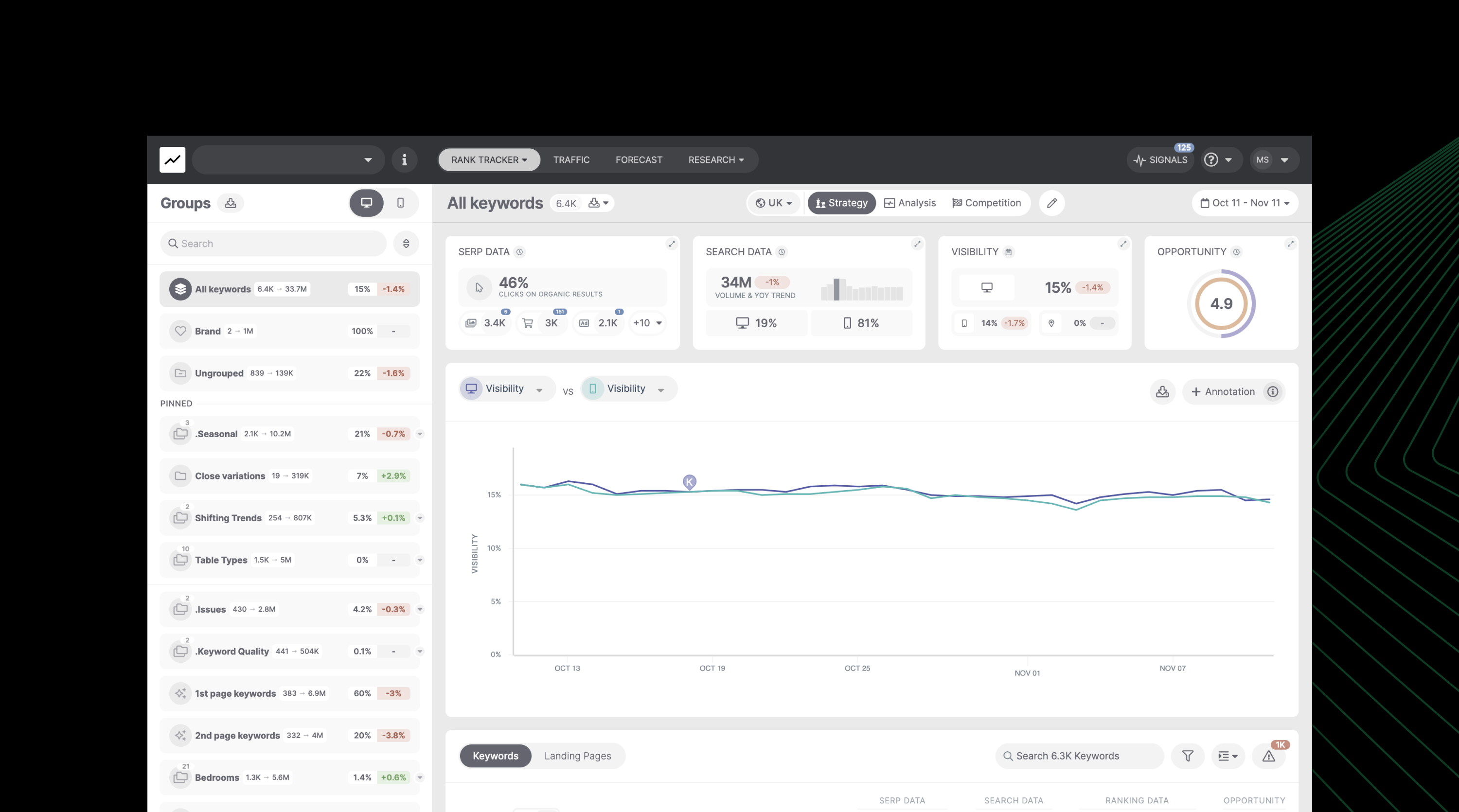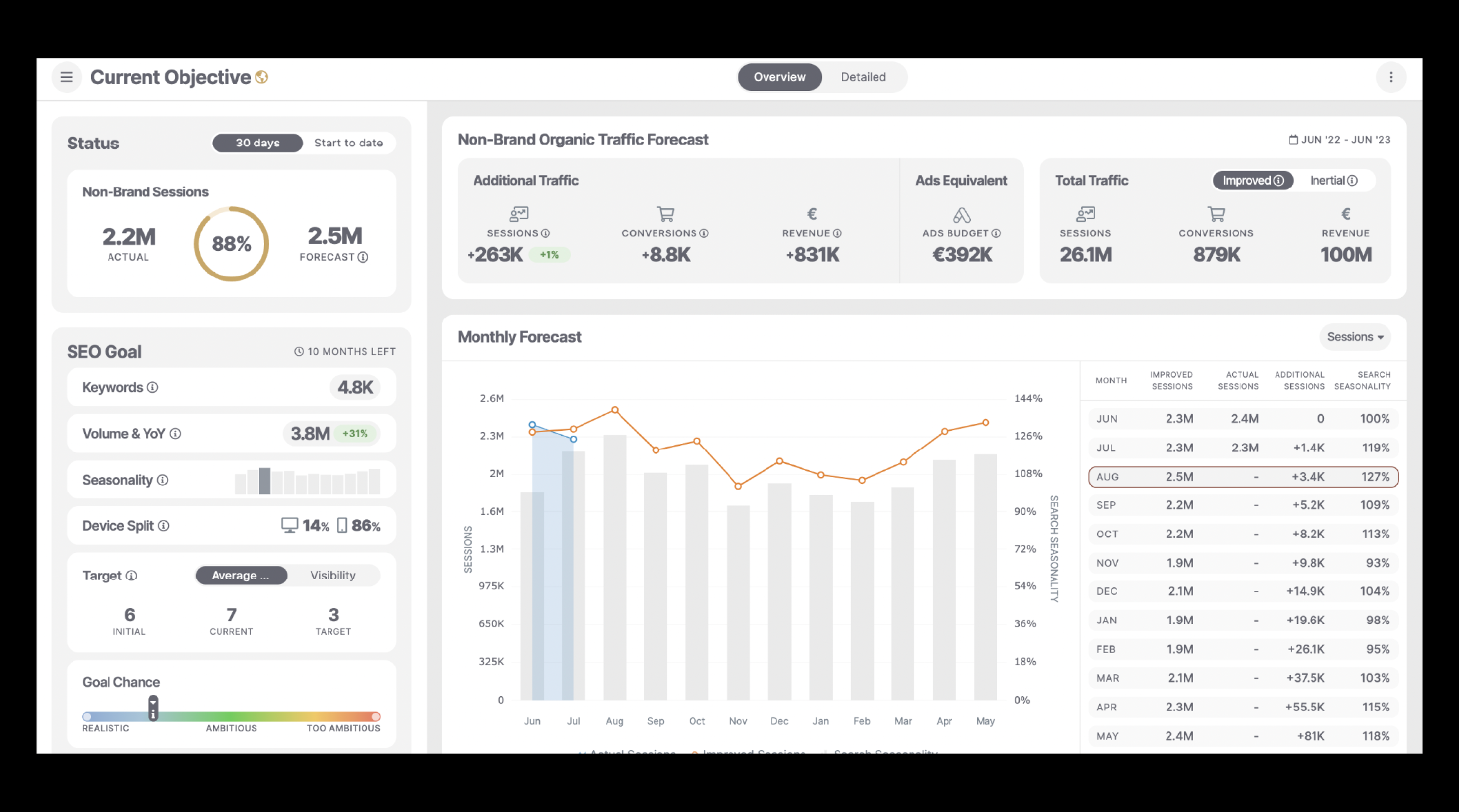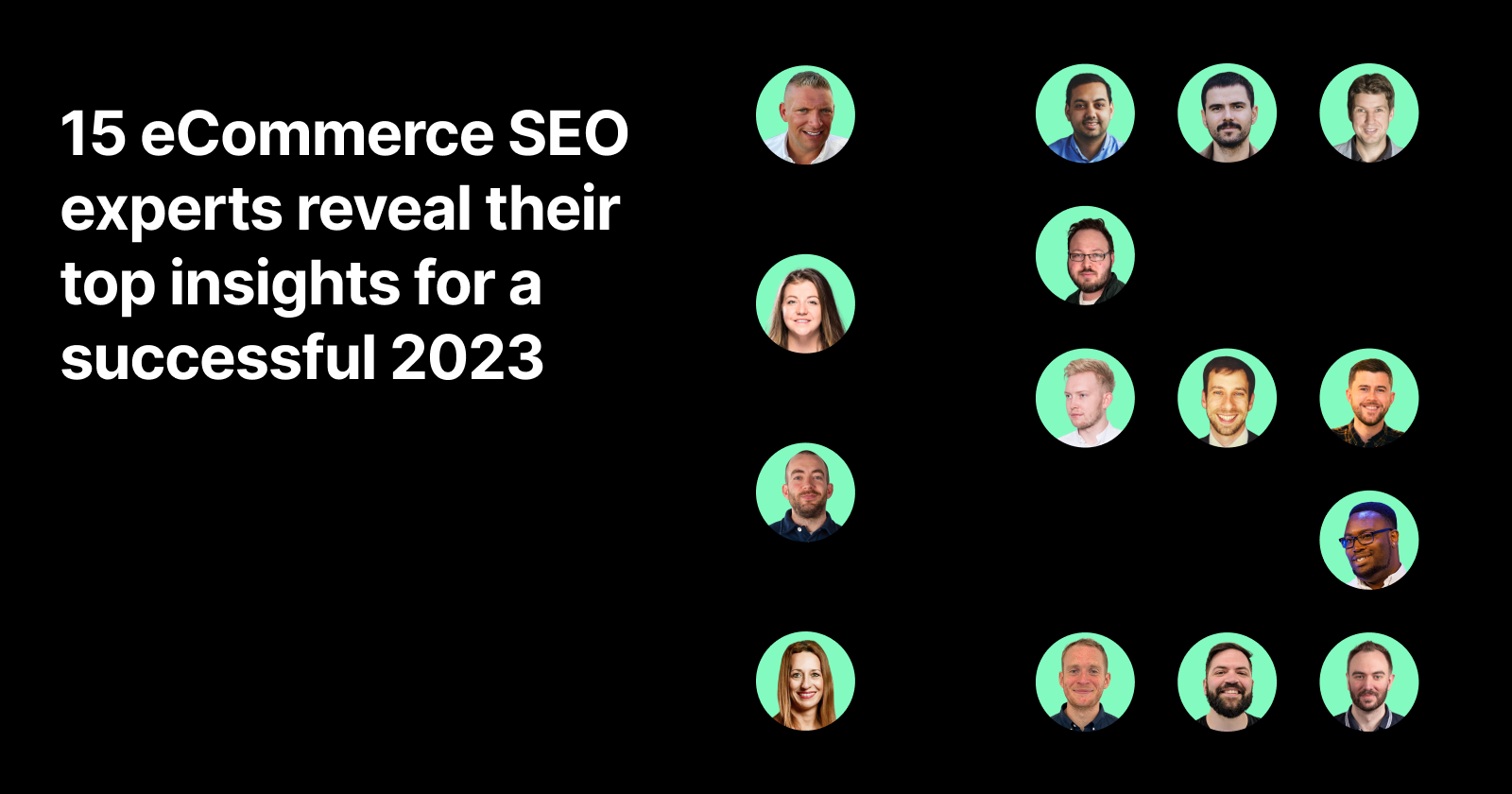Wondering how to do SEO for ecommerce?
Looking for expert insights on ecommerce SEO?
Uncertain how to make your online store more successful?
From acknowledging that the traditional customer journey is dead, to fast pivoting due to Google’s constant updates, to reassessing benchmarks after the pandemic digital boom and the subsequent fall, experts from award-winning agencies assess what’s next in ecommerce SEO.
We wanted to go beyond unpredictability, so we interviewed 15 digital growth and SEO experts to get their insights, tips, and lessons learned as part of our Ecommerce SEO deep dive.
Ecommerce experts in this article talk about search behaviors, hands-on clients, forecasting for aligning to current trends, and more.
Let’s see what they have to say.
Implement Multi-Touchpoint Customer Journeys As Search Behaviors Change
James Finlayson, Head of SEO at the7stars: “Google’s search volumes aren’t just stagnating – in many cases, they’re reducing. Despite this, consumers are conducting more research prior to purchases than ever – on Amazon and other ‘super-retailers’, on TikTok, large publishers with loyal audiences, Pinterest, YouTube, and Reddit. We recently looked at one market where, we estimated, less than 10% of search activity was actually happening on Google.” Read Finlayson on digital and in-store buying, pushing for larger budgets, and their Sofology success story.
Sara Povoas, Content and SEO Manager at iProspect Portugal: “We observed a huge increase in shopping, not only for younger audiences but also for older ones, which is new. I think that users are getting more demanding and more informed — if you have a lot of offers, you need to make smart decisions. So people are looking for more. The reviews, opinions, video demonstrations, and price comparisons are getting more popular as people are doing these decision-making searches in order to make a purchase.” Read Povoas on fluctuating stocks, health and cosmetics trends, and client communication.
Luke Carthy, eCommerce SEO & CRO Consultant: “What I’m seeing across my consumer-based clients is that Average Order Value is up, but the number of transactions is probably similar or falling. What I mean by that is they’re spending more per transaction. Rather than someone going to a clothing retailer, maybe once a month or once every couple of weeks, depending on what their previous shopping habits were, they will shop less frequently. And when they shop, they’ll spend more money. I think that happens for a couple of reasons: One is to mitigate the delivery fees and, secondly, to try and get to thresholds to claim rewards, whatever those might be.” Read Carthy on buy-in, shifting strategies, and B2B clients.
Jen Cornwell, Senior Director of Digital Strategy at Ignite Visibility: “The way people shop has changed, as they had converted to online and are now back to this hybrid style again. I think it’s all about expectation setting: Can we ever get back to those traffic levels or those conversion levels online again? What are some creative ways that we can go about if we think that’s the case? User behavior has taken a big shift.
For instance, we had an electronics client who sold computers, both online and brick-and-mortar. We started to see a shift at the beginning of 2022 as they had more foot traffic to their stores – which they’re happy about, but they do not see as many purchases online anymore. Even in the instances where there isn’t a brick-and-mortar component or the product is only available online, the opportunity for somebody to go and buy it in person just pulls them away from coming to the Internet as much as they used to.” Read Cornwell on video content, white goods, and creative page optimization.
Get Creative With Product Reviews, Long-Tail Keywords & Specificity, As Google Algorithm Updates Intensify
James Euinton, Account Director at The SEO Works: “Over the years, as Google improves its handling of language, it’s been more important to focus on the more specific, longer-tail phrases. Sometimes this may mean catering to specific questions and keywords that fall outside standard products and category pages. It’s important that we tailor additional content to these to target the customer at different points in the journey or funnel.” Read Euinton on moving the needle fast, Core Web Vitals, and business contexts.
Radu Marcusu, CEO at Upswing: “The biggest challenge this year was for marketing managers to explain the drops in the market and how to go about it. That’s why I would say it was more about us being proactive in communicating these shifts to our clients. They needed support in understanding the overall market trends and that it was a general change in demand – and, of course, in adapting to it. That also meant new tactics or focusing on specific actions. For instance, if Google now recommends refined searches, we make sure our clients have filters or categories targeting those searches. We also focus on having the right content to answer those searches. Or keep their Google My Business profiles optimized. In a nutshell, we were proactive in adapting strategies, budgets, and also specific actions implying Google changes.” Read Marcusu on differentiating through pitching, video searches, and developing internal tools.
Eli Schwartz, Growth Advisor and SEO Strategic Consultant: “Google and other search engines use deep learning to improve search results for their users continuously. This past year, I have noticed that local results are triggered more often when Google detects a local intent. At the same time, on results where there should not have been local intent, I have seen the local results disappear.”
Forecasts, SEO ROI & Data-Led Decisions Should Be At The Forefront For Ecommerce Businesses
Marc Swann, Director of Search at Glass Digital: “There’s no doubt that retailers are feeling the pinch as consumers tighten their belts, and this presents risks for most marketing agencies when it comes to justifying the value of their services. SEO is a channel that is often more at risk when times are hard, and marketing budgets are scrutinized. SEO performance can ultimately be maintained in the short and even medium term without a recurring spend associated with it, unlike something like paid search where once ad spend stops, performance disappears. So certainly, justifying expenditure in SEO is something that we have seen requested more and not seeing it as a luxury in harder times. Ultimately, those that are able to fulfill their SEO strategies through the hard times will be in much stronger positions when the economy eventually turns positive.” Read Swan on multi-lingual sites, sports retailers, and “luxury” channels.
Steve Walker, Technical Director at Journey Further: “Measuring ROI has always been important, but it’s no longer a nice-to-have. Measuring ROI is essential. This is why performance monitoring tools like SEOmonitor are critical to your agency. The amount of in-house teams has also increased dramatically over the past few months. This is a great thing for the SEO industry and a testament to SEO’s importance in digital marketing – but it fundamentally changes how agencies need to operate. We’re no longer just additional resources doing basic SEO activity. We need to act in a similar way to a business consultancy and provide strategic-level support.” Read Walker on new user journeys, measuring impact, and funnel optimization.
-
 Rank Tracker’s Strategy view on SEOmonitor.com, December 2022
Rank Tracker’s Strategy view on SEOmonitor.com, December 2022
Ben Austin, Founder & CEO at Absolute Digital Media: “We utilize forecasting for both pitching and upselling to ecommerce clients to showcase our understanding of the industry they compete in and the business. By doing so, we can more effectively dictate what is required to drive continuous growth to the business whilst highlighting the ongoing value our innovative SEO strategies provide. In addition to providing a basic forecast of the brand’s current market position, we supply further insight into the wider business benefits such as returning customers, revenue, and ROI.” Read Austin on business strategies, performing verticals in ecommerce, and dynamic URLs.
Charlie Norledge, Head of SEO Performance at Impression: “The pitches are much more competitive now because there are probably fewer clients going to market as things started to slow down a bit. We’ve had to make sure that we include innovative tactics in there. Like talking about how to utilize social media trends in organic when we talk about tech SEO, not just putting a list of fixes, making sure we have priority behind things and just giving them as much detail as possible.
Forecasting is another important piece. When we go to a competitive pitch, forecasting is, I’d say, required. If we didn’t do it, we could miss out. We were in pitches against other agencies, and because we had forecasts in place, we ended up winning the work.” Read Norledge on GPT-3 efficiency, reporting, and client expectations.
Kevin Gibbons, Founder and CEO at Re:signal: “For us, it’s important to have strong communication with our clients about where the priorities are and make sure that we know not just where the search demand is, but also the supply. Knowing what clients are focusing on – both in terms of seasonality and where the priorities could be and could be shifting because of those issues – helps us re-address what we’re doing.
I think everyone’s just probably a bit more price-conscious and cautious right now in terms of what they’re doing. So, again, that’s why ecommerce is such a strong sector for us. For the reason that you can track organic revenue performance. Everyone wants to make sure they’re maximizing their ROI.” Read Gibbons on internationalization and their ASICS success story.
-
 SEO Forecast by SEOmonitor, December 2022
SEO Forecast by SEOmonitor, December 2022
Leverage Integrated Campaigns To Build More Growth Opportunities
It’s not just about one channel or one tactic, but ecommerce digital experts are looking more and more into how they can optimize the full user experience, coordinate PR and SEO efforts, and make sense of the whole industry landscape and where the opportunity lies:
Petar Jovetic, Organic Director at Impression: “Everything we do has to show value and be targeted. We’re baking innovation more and more into our proposition. It’s been quite compelling to leverage AI to handle higher workloads and then do it more efficiently. One other thing I’m keen to explore is using our CRO department, especially at the bottom of the funnel where every user counts, to grow acquisition strategically with more A/B testing, multivariate testing, etc. We’re looking into how CRO and SEO can complement each other more. I think that is really appealing in the current economic climate. So we’re not just throwing additional users but nurturing them through the funnel to conversion.” Read Jovetic on SEO maturity frameworks and the State of Retail.
Charlie Clark, Account Director & Founder at Minty Digital: “I noticed more clients are looking to build their brand through digital PR, and we build their brand name rather than just focus on sales. Some of the bigger companies we work with used to allocate a separate budget to SEO, and that used to be the entire thing. Now they’re allocating separate budgets within their departments, one for SEO and one for PR. They’ll have their traditional PR, the standard press releases, but then they’ll also be tying in the digital aspect to that, which is something that’s been quite interesting to know.” Read Clark on entering new markets and campaign KPIs.
Heemesh Vara, Head of SEO at Semetrical: “Our keyword research process focuses on exploring the whole industry. That’s something different from other agencies. Where they might take a category-by-category approach and do it month by month, we do it the other way around. It’s a lot of work for us at the beginning, but it does provide the client and us with a complete picture of their entire industry. For example, we worked with a vintage furniture client with multiple types of products and categories, from sofas, stools, chairs, side tables, etc. So we had to research the entire industry all at once. And this is one of our unique selling propositions that we always put in the proposal as well.” Read Vara on SEO data analysis and baselines, stakeholder management, and securing budgets.
In the end, as our 15 interviews have shown, both ecommerce clients and markets continue to shift, so it’s critical to showcase sustainable results.
With all these challenges SEO experts face in mind, we continue to develop SEOmonitor so it helps you:
- Prove the value of SEO with a forecast solution that allows you to connect desired ranking targets to non-brand organic traffic growth potential.
- Bring session, conversions, and revenue data back into keywords with our solution to the (not provided), so you know what the performing keywords are.
- Keep track of demand with daily ranks for desktop and mobile as standard, search volumes and year-over-year trends across the platform, and automatic seasonality alerts.
- And so much more.
